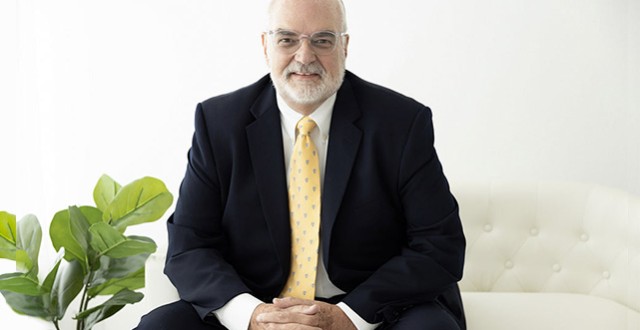
- Mediation
- Arbitration
- Court Neutrals
- Online Dispute Resolution
- Technology
- Court Decisions
- More
- Legislation
- Healthcare
- Guest Posts
- John DeGroote
- John C. Fleming
- Rick Freeman
- Professor Peter Friedman
- Honorable W. Royal Furgeson, Jr.
- James M. Gaitis
- Laura A. Kaster
- Professor John Lande
- Philip J. Loree, Jr.
- Michael McIlwrath
- F. Peter Phillips
- Professor Alan Scott Rau
- Professor Thomas J. Stipanowich
- Professor S.I. Strong
- Richard Webb
- Glen M. Wilkerson
- International arbitration
- Regulation
- Sports and Entertainment
- We’re Back!!!!Well, it’s been a while since we published and that is about to change. Since I spent much of last year becoming
 JAMS Welcomes Karl Bayer to its Panel of NeutralsJAMS, the world’s largest private alternative dispute resolution (ADR) provider, is pleased to announce that Karl Bayer
JAMS Welcomes Karl Bayer to its Panel of NeutralsJAMS, the world’s largest private alternative dispute resolution (ADR) provider, is pleased to announce that Karl Bayer Class Action Waivers in Arbitration Agreements: The Twenty-First Century Arbitration Battleground and Implications for the EU CountriesLinda S. Mullenix, Morris & Rita Atlas Chair in Advocacy at the University of Texas School of Law, has written “Class Ac
Class Action Waivers in Arbitration Agreements: The Twenty-First Century Arbitration Battleground and Implications for the EU CountriesLinda S. Mullenix, Morris & Rita Atlas Chair in Advocacy at the University of Texas School of Law, has written “Class Ac Picking the Proper Technological Tool for Problem-Solving in ArbitrationProfessor Amy J. Schmitz, John Deaver Drinko-Baker & Hostetler Chair in Law and Co-Director of the Translational Data An
Picking the Proper Technological Tool for Problem-Solving in ArbitrationProfessor Amy J. Schmitz, John Deaver Drinko-Baker & Hostetler Chair in Law and Co-Director of the Translational Data An
Recent Posts
GUEST-POST PART VI | Questions Clients Have about Mediation: How Do We Get Started?
By Kent B. Scott and Cody W. Wilson How Do We Get Started? There are many things for counsel and the client to do prior to mediating. A key task is to prepare the client to participate in the mediation. This is essential to a successful mediation outcome, because unlike arbitration and litigation, in which counsel for the parties do most if not all of the talking, mediation involves client participation. However, some clients feel more comfortable than others in representing its interests. Other tasks include determining whether there is any reason not to hold a joint session, identifying the documents and information to be exchanged, who should attend the mediation on behalf of the client, whether one or more experts will be needed, who the ultimate decision makers will be who must attend the mediation on the client’s behalf because without them the dispute cannot be settled. Preparing the client for mediation Clients need to know what to expect at the mediation and how to conduct themselves. They need to know that mediation is less adversarial than other processes, and they should be prepared to be civil and even pleasant to the adversary during joint sessions and leave their anger at the office. Venting can take place in private sessions with the mediator. Prior to mediation the client and counsel should identify the strengths and weaknesses of each side’s case. Some counsel fear that by helping the client see weaknesses in its own case, they will be perceived to be less than a zealous advocate. So some attorneys leave this task to the mediator. But a client who has a realistic view of the case when he or she walks in the door is in a position to reach a settlement much sooner. Since the mediator will try to learn what each side would desire as a settlement and what needs and interests a settlement would have to satisfy, the client should try to identify these items prior to the mediation. This will help the mediator and the client develop proposed options for settlement. Discussions concerning information to be revealed The client and counsel discuss the information and documents to be exchanged with the adversary and what will be revealed in the client’s mediation statement. A mediation statement presents a party’s view of the facts and the applicable law. Whether the parties’ mediation statements will be given only to the mediator or exchanged by the parties will be decided before the mediation by counsel for the parties and the mediator. Mediators usually will ask the parties to prepare confidential mediation statements to be viewed only by the mediator. Where appropriate, the parties can agree to exchange their mediation statements with each other. The mediator may ask the parties’ attorneys to prepare confidential summaries of the strengths and weaknesses of each side’s case and their objectives for the mediation. Counsel and the client should discuss how much confidential information to initially disclose to this statement, as well as in the private caucus. The client’s views on this could change during the mediation as the client develops trust in the mediator. The mediator will determine how far in advance of the mediation the mediation statement and any confidential summaries should be submitted. These documents ultimately will educate the mediator so that he or she can engage in “reality testing” and help the parties assess the offers and counteroffers that will be transmitted by the mediator during the mediation. Decisions concerning mediator selection One of the most important decisions to be made in mediation is deciding who should be the mediator. Counsel and client should discuss the qualifications desired in the mediator. This can include mediation skills as well as subject matter expertise in the area of the dispute. Counsel should explain the difference between an evaluative and facilitative mediator so the client can determine what kind of mediator it would like. When preparing the client for mediation, it is not necessary for the client to know what its final offer or demand would be. Indeed it is better to be flexible and not have reached this point. However, the client should be made aware of the alternatives if the mediation does not result in a complete settlement so that when the mediation actually takes place, the client can weigh those alternatives, especially if the parties end up in an impasse situation. Part VII of this series will discuss dealing with the mediator and the opposing party. Stay tuned. [Ed. note: the contents of this post were first published on a different form in the May/July 2008 Edition of the AAA Dispute Resolution Journal.] Kent B. Scott is a shareholder in the law firm of Babcock Scott & Babcock in Salt Lake City whose practice focuses on the prevention and resolution of construction disputes. As a mediator and arbitrator, Mr. Scott currently serves on the AAA’s panel of mediators and the AAA’s Large Complex Construction Case Panel. He also serves on the arbitration and mediation panels for the U.S. District Courts (District of Utah), State District Court (Utah) and Utah Dispute Resolution. Mr. Scott is a founding member of the Dispute Resolution Section of the Utah Bar and a Trustee for the Utah Council on Conflict Resolution. Cody W. Wilson is an associate in the law firm of Babcock Scott & Babcock, concentrating his practice in the area of construction law, is licensed in all courts in the State of Utah, the U.S. District Court of Utah, the 10th Circuit Court of Appeals, the U.S. Court of Federal Claims and is a member of the ABA Forum on the Construction Industry. They can be reached at kent@babcockscott.com and cody@babcockscott.com.
Continue reading...Bilski v. Kappos: U.S. Supreme Court Rules that Business Methods Survive
The US. Supreme Court decided today the high-stakes software patent case Bilski v. Kappos, No. 08-964, June 28, 2010, affirming the Federal Circuit’s judgment. (find our previous post here) In Bilski, the Federal Circuit had rejected patent claims involving a method of hedging risks in commodities trading. The questions decided by the Court were: (1) whether the Federal Circuit erred by creating the so-called “machine or transformation” test, which requires a process to be tied to a particular machine or apparatus, or transform an article into a different state or thing, in order to be patentable subject matter; and (2) whether the machine or transformation test contradicts Congressional intent (pursuant to 35 U.S.C. 273) to allow for business methods to be patented. The Court held that business methods are eligible subject matter under the Patent Act but declined to accept the Federal Circuit’s machine-transformation test as the exclusive test for the Section 101 determination. Following are excerpts from the majority opinion: Today, the Court once again declines to impose limitations on the Patent Act that are inconsistent with the Act’s text. The patent application here can be rejected under our precedents on the unpatentability of abstract ideas. The Court, therefore, need not define further what constitutes a patentable “process,” beyond pointing to the definition of that term provided in §100(b) and looking to the guideposts in Benson, Flook, and Diehr. And nothing in today’s opinion should be read as endorsing interpretations of §101 that the Court of Appeals for the Federal Circuit has used in the past. See, e.g., State Street, 149 F. 3d, at 1373; AT&T Corp., 172 F. 3d, at 1357. It may be that the Court of Appeals thought it needed to make the machine-or-transformation test exclusive precisely because its case law had not adequately identified less extreme means of restricting business method patents, including (but not limited to) application of our opinions in Benson, Flook, and Diehr. In disapproving an exclusive machine-or-transformation test, we by no means foreclose the Federal Circuit’s development of other limiting criteria that further the purposes of the Patent Act and are not inconsistent with its text. To read the opinion, click here. Technorati Tags: arbitration, ADR, law
Continue reading...Granite Rock v. Teamsters: U.S. Supreme Court Rules on Arbitrability
Last week, the U.S. Supreme issued its decision on Granite Rock v. Teamsters, No. 08-1214 , June 24, 2010. Justice Thomas wrote the majority opinion, joined by Chief Justice Roberts, Justices Scalia, Kennedy, Ginsburg, Breyer, and Alito. Justices Stevens and Sotomayor concurred in part and dissented in part. In Granite, the responder is a local union (Local) supported by its parent international (IBT). The petitioner is Granite Rock (Granite), employer of some of Local’s members. The case is about Granite’s claims against Local and IBT for economic damages arising out of a strike. The parties had reached a collective bargaining agreement (CBA), however, they disagreed about the date the CBA was formed and who should decide that question. Granite contended that the agreement was ratified on July 2 (containing non-strike and arbitration clauses) while Local argued that it was on August 22. The Court held that a district court, not an arbitrator, should decide the CBA ratification date. The court noted that “[t]he CBA requires arbitration of disputes that ‘arise under’ the agreement. The parties’ ratification-date dispute does not clearly fit that description.” Technorati Tags: law, ADR, arbitration
Continue reading...How to Disclose Adverse Events to Patients
By Holly Hayes The May/June edition of the Physician Executive Journal (PEJ) provides a step-by-step approach for reporting adverse events to patients. The seven-step approach is based on principles used in the Program for Health Care Negotiation and Conflict Resolution at the Harvard School of Public Health. A summary of each of the seven steps recommended include: Step 1: Information gathering Prior to any meeting with the patient or family, it’s critical to gather as much information about the serious event as possible. A thorough investigation and review of the incident should be conducted in collaboration with risk management. Step 2: Identify stakeholders The next step is to identify those individuals who will participate in the meeting. We want to get the right people to the table. It is likely that there will be two or three members of the family present at the meeting, including the patient. The number of hospital representatives at the meeting should not significantly exceed the patient and his/her family. This may create the perception of a power differential and possibly be perceived as “bully” tactics. The meeting should generally not include legal representation from the patient and his/her family because the discussion is designed to be informational in nature. In addition, cases that meet the definition of a serious event do not necessarily meet the legal definition of malpractice. Step 3: Communicating the goal The meeting should start with introductions by all of the participants and the role and responsibilities of the staff… (and) should state the purpose of the meeting: “Our mission is to provide the highest quality of care to all of our patients. We take this very seriously. If we have an outcome that is not optimal, then we look very carefully at the care that we provided, and ask ourselves if we could have done better. In this case, there was a complication during the hospitalization. We looked into our processes with a multidisciplinary team. We believe that there may have been measures we could have taken to maximize the chances of success. When we believe this may be the case, we report these events to the state and meet with the family to discuss any mutual concerns.” Step 4: Active listening After the problem has been identified, the next step is to ascertain the self-interests or concerns of the patient and/or family. The Chief Medical Officer/Vice President of Medical Affairs (CMO/VPMA) should express a sincere interest in wanting to hear about their perceptions of the care rendered. This will require active listening. The family may be angry, confused, or sad. This is the opportunity for them to express their concerns and vent some of their frustrations. This may be difficult for the physician to hear, but all of the staff must be active listeners and demonstrate empathy and concern for the patient’s self-interests. The initial goal is for the family to build confidence in those around the table. The CMO/VPMA must create a “safe zone” for the family that allows them to express themselves without reprisal. Step 5: Seeking agreement At this stage, the CMO/VPMA should start to elicit areas of agreement. The family should be asked if there were positive experiences about the care rendered. Were there individuals who gave them confidence and helped anchor them during a difficult time? Agreements about the positive aspects of care should be reviewed and reinforced. The family should be asked if there were aspects about the care that they disagreed with, or found less than optimal. Concerns about the quality of care may be categorized into several areas based on agreements and disagreements. Step 6: Finding solutions The CMO/VPMA should ask the family how the care team could have done this better. Having the patient participate in the corrective action plan will add value and generate buy-in to any solutions formed. Of course, the solutions must be feasible. Step 7: Giving and getting The parties should reach agreement on the proposed corrective action items. In many ways, this is a “give” and “get” process. For the family, there was communication of information, the commitment by the hospital and staff to improve their performance, and an apology that the care delivered did not meet their expectations. For the hospital, the hospital is able to “get” conflict resolution, reduce risk for litigation, and restore trust in their partnership with the community and the families. Seeking out these mutual gain options is important in order to redefine success. The interests and motives should not only be aligned, but the family’s participation in the process will add value to the solutions proposed. If the patient and family view the process positively, then they will tend to embrace new achievements favorably and, most importantly, as fair. The process by which a solution is found is important for both the family and the CMO/VPMA. Each will have to justify any alignment in self-interest and “give-and-take” with their respective constituencies. For more information on the Harvard Program for Health Care Negotiation and Conflict Resolution, see here. We welcome your comments on this approach to communicating with patients about adverse events. Holly Hayes is a mediator at Karl Bayer, Dispute Resolution Expert where she focuses on mediation of health care disputes. Holly holds a B.A. from Southern Methodist University and a Masters in Health Administration from Duke University. She can be reached at: holly@karlbayer.com.
Continue reading...Arbitration
Mediation
Healthcare Disputes
Legal Research
About Disputing
Disputing is published by Karl Bayer, a dispute resolution expert based in Austin, Texas. Articles published on Disputing aim to provide original insight and commentary around issues related to arbitration, mediation and the alternative dispute resolution industry.
To learn more about Karl and his team, or to schedule a mediation or arbitration with Karl’s live scheduling calendar, visit www.karlbayer.com.






